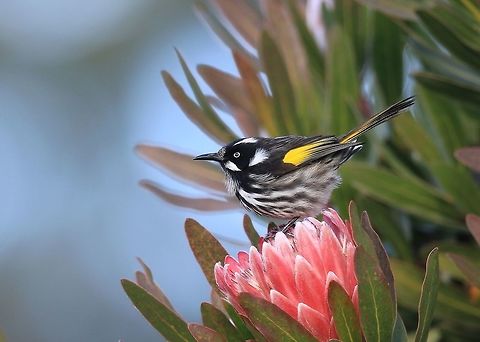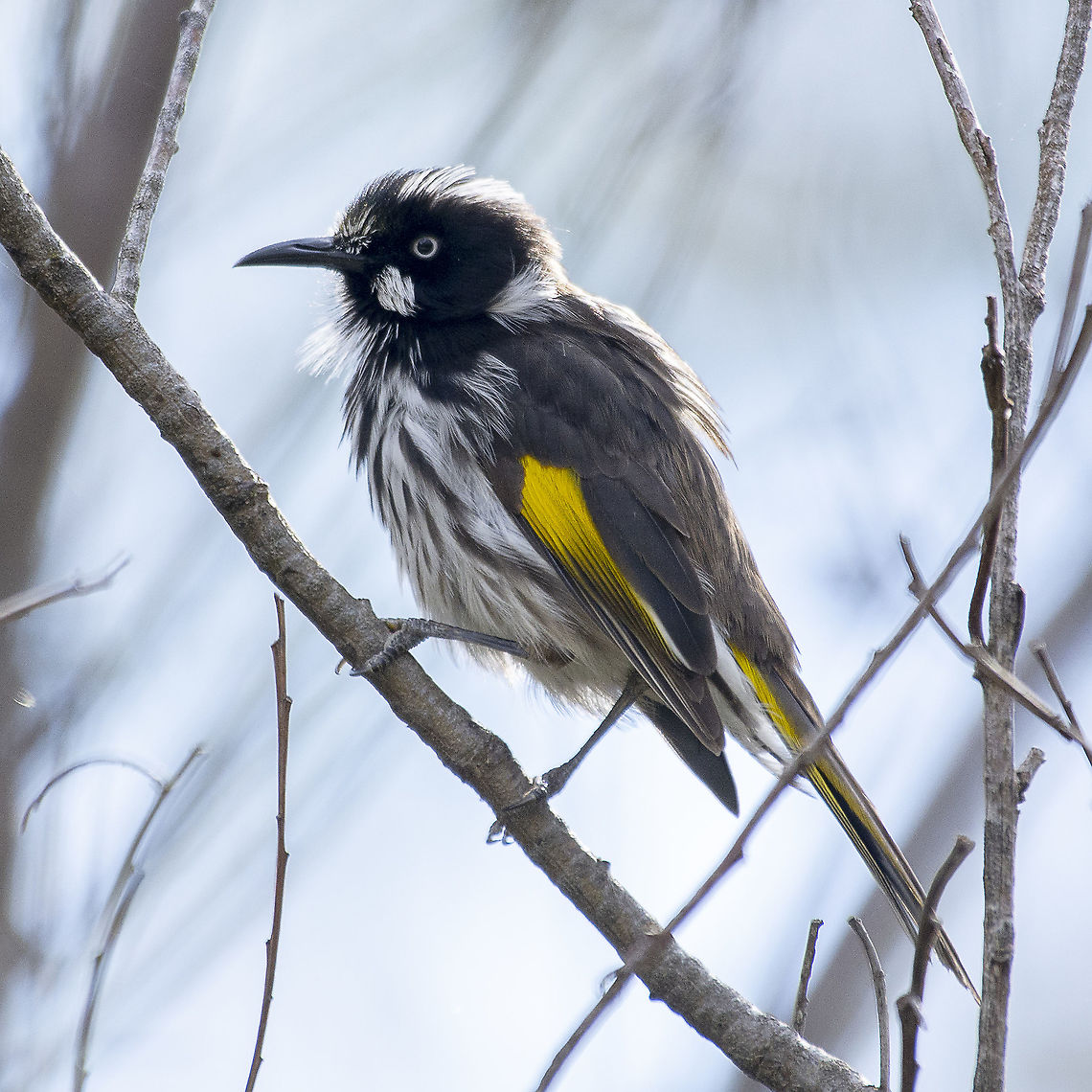
The New Holland honeyeater is a honeyeater species found throughout southern Australia. It was among the first birds to be scientifically described in Australia, and was initially named "Certhia novaehollandiae".
Similar species: Perching Birds
By Calbost Niel
Attribution
Uploaded Jul 28, 2021. Captured Jul 27, 2021 13:28 in Mabel Falls Walking Track, Woodford NSW 2778, Australia.


comments (8)
The New Holland honeyeater (Phylidonyris novaehollandiae) is a highly energetic bird that, appropriately, requires a high-energy food source: sugar-rich nectar. Seldom seen sitting still, they flit from flower to flower, feasting on nectar and pollinating as they go. In fact, they are actually key pollinators for numerous flowering plants (many of which are endemic to Australia), such as Banksia, Hakea, Xanthorrhoea, and Acacia.
One super cool feature of the New Holland honeyeater is its tongue! They have a brush-tipped tongue, reminiscent of an artist's paintbrush! They extend their tongue into a flower 10 times per second, with the sweet nectar sticking to their overzealous, licking tongue. If a diet consisting of sugary nectar seems unhealthy, that's because it is. Not to worry, though -- honeyeaters supplement their diet with insects.
We would be remiss if we didn't mention their temperament...New Holland honeyeaters are feisty, inquisitive, and quarrelsome birds. They don't like to share their nectar supplies and will defend their territory with vigor! Don't even ask them for a single sip of nectar because the answer will always be 'no'. {Spotted in NSW, Australia by Calbost Niel}. #JungleDragon #NewHollandHoneyeater #Phylidonyrisnovaehollandiae
https://www.facebook.com/jungledragonwildlife Posted 4 years ago